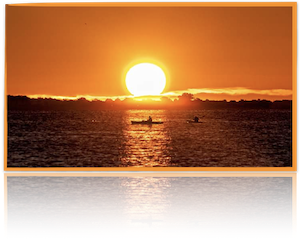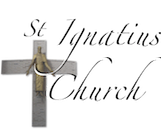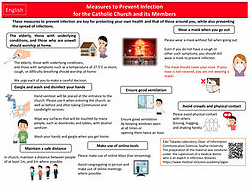
Jesus Is Alive, And We Live With Him
We notice how some of Jesus’ Easter appearances take place in Jerusalem, where Jesus was crucified, and some take place in the northern area of Galilee, where Jesus spent most of his life and gathered his disciples.

Mark’s gospel locates the first announcement of Jesus’ resurrection at the empty tomb outside Jerusalem. There the women are told that Jesus has risen and that his disciples should meet him back in Galilee. The last chapter of John’s gospel seems to have been added later to the original version. It tells us that the disciples did actually meet Jesus in Galilee. It was after an unsuccessful night of fishing on the lake. Then Matthew reports a final scene when Jesus tells his disciples to go and spread the good news to all nations and promises that he will be with them till the end of the world. That all takes place in Galilee and fits together very neatly.
But there’s more. The gospels of Luke and John give us some other very picturesque scenes which take place in Jerusalem—like the scene with Thomas in last week’s gospel of John, or the appearance on the road to Emmaus and then to the other disciples in today’s gospel according to Luke.
It’s good to remember that Mark was the earliest gospel and was probably written some 40 years after the resurrection event itself, Luke and John maybe 50 or 60 years after the resurrection. When we look back 40 years, we find ourselves back into the early 1980s, and 60 years ago takes us back into the 1960s, when the first Tokyo Olympics were held and the first astronauts landed on the moon. People who lived through those years have different ways of telling younger people what happened “back then.” Something like that happened with the stories of the resurrection. The times and locations vary with the telling. But the tradition of the Church assures us that these accounts are all authentic witnesses to the risen Lord, even if there is some confusion as to time and place.
So today we heard Luke tell us that Jesus met with his disciples in Jerusalem on the very night of the resurrection. Luke tells the story that came down to him maybe some 50 years after that first Easter night. Jesus doesn’t knock or cough to let them know he’s coming. He’s just there all of a sudden. In fact it’s so sudden that they think they’re seeing a ghost or just imagining that it’s Jesus. But Jesus reassures them that he is really there, bodily, by inviting them to touch him and see that he has flesh and bones. Luke even says that Jesus ate a piece of fish to show them that he was really alive and with them, just as when they ate together previously.
Then Jesus gives them the key to understanding why things happened as they did, why he had to suffer and die and rise from the dead. And he gives them their basic mission to tell the whole world about him. Luke continues the story in the Acts of the Apostles, like in today’s first reading, where we see Peter fulfilling this mission by telling the people that Jesus, “whom you put to death,” has been raised to a new life. Peter tries to relieve the shock of what he says by telling them that he realizes they “acted out of ignorance,” but if they repent and accept Jesus as their Savior, their sins will be “wiped away.”
These experiences of the first followers of Jesus are the ground of our faith. They assure us that Jesus’ life did not end with his death but took on a new spiritualized, yet still bodily, form. He did not escape from his body but transformed it, taking it with him beyond the limits of time and place. And he gave us the mission to spread the good news that he is alive and will welcome us to live with him after we finish our limited life on this earth and enter into eternal life with him.
So there’s work to be done. It’s the work that God gives each one of us through our individual talents and our personal history. Some have the ability to take their place in the world as great musicians, or baseball players, or authors of deeply moving novels. Artists and athletes and teachers and researchers all contribute in their own way to making people and society more human, more compassionate, and more interrelated in various ways. But even the rest of us, who are not artists or athletes or teachers, we all have our turf—our family, our neighborhood, our workplace, or the people we meet every day. Let’s ask the Spirit of Jesus to show us how we can be good and how we can do good with and for others.
Of course, we are also aware that there are forces of darkness and evil at work in the world that aim at hindering or destroying the good that we try to do. We may find it hard to say, as Peter did, that they are acting “out of ignorance,” but that is so true. The rights and lives of people are being ignored or sacrificed to other aims, like acquiring wealth or maintaining political power. Maybe the only thing we can do is suffer with the victims of poverty or war and do what we can to offer help and relief, knowing that Jesus himself entered into this dark side of humanity, suffered and died as a victim of the ignorance of people in power. But he rose again to proclaim that it does not all end there and to encourage us to do what we can to help him bring life out of death. St Francis put it so well:
Where there is hatred, let me sow love;
where there is injury, pardon;
where there is doubt, faith;
where there is despair, hope;
where there is darkness, light;
where there is sadness, joy.
and…
It is in giving that we receive,
it is in pardoning that we are pardoned,
and it is in dying that we are born to eternal life.
Robert Chiesa, SJ - April 14, 2024
 ENGLISH
ENGLISH  ESPAÑOL
ESPAÑOL 







